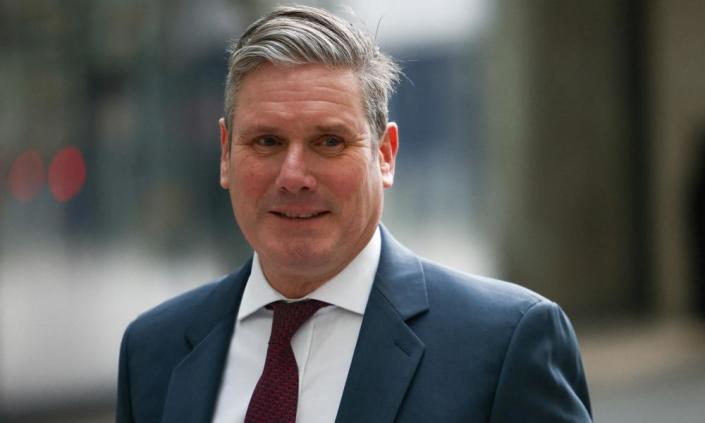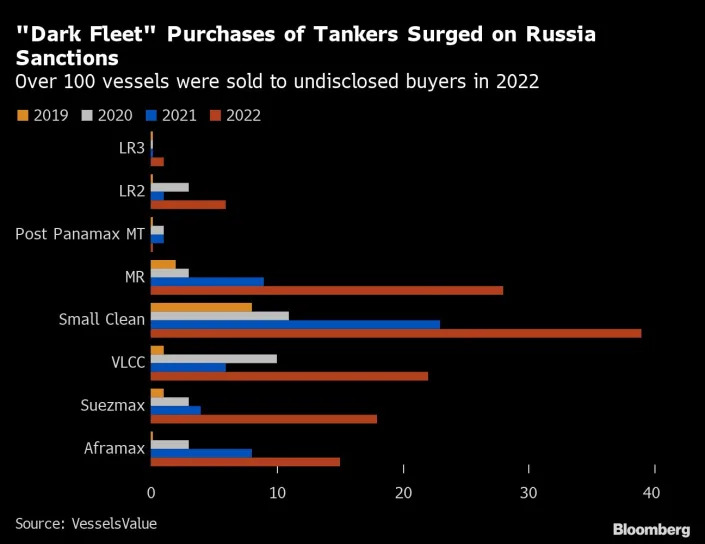Sir Keir is ‘selling the Labour Party’s soul in order to enter Downing Street’ and turning it into a ‘poundshop Tory tribute act’, says SNP’s Westminster leader

Labour Party leader Sir Keir Starmer speaking in east London, following the Equality and Human Rights Commission's announcement that it has concluded its monitoring of the Labour Party. Picture date: Wednesday February 15, 2023.
SIR KEIR STARMER is “selling Labour’s soul and turning it into a pound shop Tory tribute act” because he thinks it will win him power, SNP Westminster leader Stephen Flynn charged today.
The Aberdeen South MSP argued that Scotland “deserves better than a damaging choice of two pro-Brexit Tory Prime Ministers, but that is all the Westminster parties have to offer.”
His comments came after Sir Keir ignored internal party democracy and vowed his left-wing predecessor Jeremy Corbyn would never again be a Labour MP after being thrown out of the parliamentary party in 2020.
The increasingly authoritarian ex-director of public prosecutions also invited his critics to quit the party, saying: “If you don’t like it, nobody is forcing you to stay.”
But Mr Flynn said: “Keir Starmer is selling the Labour Party’s soul in order to enter Downing Street.
“Instead of offering meaningful change, he’s turned the party into a pound shop Tory tribute act that backs Brexit, denies Scottish democracy and wants to impose Tory cuts and creeping privatisation.”

Labour Party leader Sir Keir Starmer speaking in east London, following the Equality and Human Rights Commission's announcement that it has concluded its monitoring of the Labour Party. Picture date: Wednesday February 15, 2023.
SIR KEIR STARMER is “selling Labour’s soul and turning it into a pound shop Tory tribute act” because he thinks it will win him power, SNP Westminster leader Stephen Flynn charged today.
The Aberdeen South MSP argued that Scotland “deserves better than a damaging choice of two pro-Brexit Tory Prime Ministers, but that is all the Westminster parties have to offer.”
His comments came after Sir Keir ignored internal party democracy and vowed his left-wing predecessor Jeremy Corbyn would never again be a Labour MP after being thrown out of the parliamentary party in 2020.
The increasingly authoritarian ex-director of public prosecutions also invited his critics to quit the party, saying: “If you don’t like it, nobody is forcing you to stay.”
But Mr Flynn said: “Keir Starmer is selling the Labour Party’s soul in order to enter Downing Street.
“Instead of offering meaningful change, he’s turned the party into a pound shop Tory tribute act that backs Brexit, denies Scottish democracy and wants to impose Tory cuts and creeping privatisation.”
Starmer to make EU trade and standards pledge as Tories ‘give up on farmers’
Helena Horton Environment reporter
Sun, 19 February 2023

Photograph: Henry Nicholls/Reuters
Keir Starmer will promise farmers a closer trading relationship with the EU and to protect high British food standards, as he says the Conservatives have “given up on farmers”.
The Labour leader will make his pitch to the rural community in a speech to the National Farmers’ Union (NFU) on Tuesday, promising more police and community support officers in the countryside.
Starmer will highlight how under 13 years of Conservative rule, public services have crumbled in rural areas and crime rates have increased.
“If your village has an antisocial behaviour problem, or a fly-tipping problem, or off-road biking, and the only police officers around are in a station or custody suite miles away, filing an arrest, off the streets for hours – that’s a unique problem,” he will tell the conference.
“We’ll get 13,000 more police into our towns and villages, more police on countryside streets.
“All of this requires a different approach. One that is designed – from the start – with respect for the challenges of the countryside.”
The Labour party has announced new policies on crime in recent days, with the shadow justice secretary, Steve Reed, pledging “clean up squads” for fly-tippers.
The NFU has lobbied for years against trade deals that could undercut British farmers, such as the one the former prime minister Liz Truss struck with Australia, amid fears that post-Brexit Britain would be too reliant on imports.
Thérèse Coffey this week told the National Association of State Departments of Agriculture winter conference in Washington DC, that she hoped to increase trade with the US and import more of its “fantastic produce”.
However, Starmer will tell the conference that under a Labour government, British farmers will be prioritised and standards upheld.
He will say: “It was obvious the Conservative party had given up on farmers when they elected Liz Truss. Labour’s approach to trade will be very different – I can promise you that. We want to remove barriers to exporters, not put them up. We want to protect high British standards, not water them down.
“We are going to talk to our friends in the European Union, and we are going to seek a better trading relationship for British farming.”
The conference, held in the International Convention Centre in Birmingham, will also hear from Coffey and the farming minister, Mark Spencer.
Farmers will be hoping to hear greater clarity from the ministers on the new post-Brexit nature payments schemes, which replace the EU’s common agricultural policy subsidies. Many have complained the new payments system leaves them out of pocket, with many unable to access funds.
Starmer’s speech will not explicitly mention the farming payments, and Labour has not yet committed to spending the same as, or more than, the Conservatives, who have promised £2.4bn a year to land managers. The Liberal Democrats have said they would exceed this budget.
The Labour leader will, however, pledge to look at the supply chain, which many farmers have said is unfair as they make less than a penny an item from many popular supermarket staples, such as bread and cheese.
He will say: “All around the world, businesses are looking again at the resilience of their supply chains. Reacting to the crises we have faced and will face in the future – countries must do the same. That’s not protectionist. It’s the reality of delivering national resilience in this new era.”
Labour will reintroduce tougher Asbos with powers to make arrests
Will Hazell
Sat, 18 February 2023

Hoodies on bikes - Getty Images
Labour have pledged to reintroduce a strengthened version of the Asbo that would allow police to arrest those engaging in anti-social behaviour.
The party said the “Respect Orders” would tackle serial offenders and help clean up high streets.
In 2014, the Government overhauled powers relating to anti-social behaviour, abolishing Labour’s anti-social behaviour orders (Asbo).
The orders were replaced with anti-social behaviour injunctions, which were supposed to provide a speedier response to unacceptable behaviour. There were also concerns that for some hardened offenders, being slapped with an Asbo was regarded as a badge of honour.
However, Labour have criticised the injunctions because in most circumstances breaching them does not allow for an arrest to be made. The party has argued that this results in the police and councils not even bothering to apply for them in many areas.
Yvette Cooper, the shadow home secretary, said the Respect Orders would create stronger enforcement powers, including a new criminal offence covering adults who have repeatedly committed anti-social behaviour while ignoring warnings by courts and the police.
Crucially, the orders would come with the power of arrest.
Ms Cooper said: “Anti-social behaviour makes people’s lives a misery. The disgraceful behaviour of a small minority undermines communities, blights town centres, and leaves people feeling unsafe.
“Some town centres have been particularly hard hit with vandalism, harassment and abuse towards shoppers and staff, street drinking and drug dealing.”
According to an analysis by the party, recorded instances of criminal damage to shops, schools, leisure centres and businesses have increased by more than 30 per cent over the past year. In the year ending September 2021, 41,550 offences of “criminal damage to a building other than a dwelling” were recorded by police. In the following year this had risen to 54,487.
Ms Cooper went on: “The Conservatives have turned their backs on communities struggling with anti-social behaviour – cutting neighbourhood police and cutting enforcement action. Time and again people report problems but no one comes and nothing is done. Labour won’t stand for that.
“The next Labour government will put neighbourhood police back on the beat and make sure they have proper powers to act against repeat anti-social behaviour offenders. Our action plan will finally give communities the action and support they need.”
The Respect Orders are the latest policy from Labour aimed at showing voters the party is tough on crime ahead of the next election.
Last week, Labour said that fly-tippers would be forced to join community “chain gangs” to clean up the rubbish they have dumped.
A Tory spokesman said: “Since 2010, Labour have voted against tougher sentences, more powers for the police and more police funding at least 34 times. They have specifically voted against tougher sentences for desecration of war memorials. It's yet another example of them saying one thing and doing the opposite.”
Will Hazell
Sat, 18 February 2023

Hoodies on bikes - Getty Images
Labour have pledged to reintroduce a strengthened version of the Asbo that would allow police to arrest those engaging in anti-social behaviour.
The party said the “Respect Orders” would tackle serial offenders and help clean up high streets.
In 2014, the Government overhauled powers relating to anti-social behaviour, abolishing Labour’s anti-social behaviour orders (Asbo).
The orders were replaced with anti-social behaviour injunctions, which were supposed to provide a speedier response to unacceptable behaviour. There were also concerns that for some hardened offenders, being slapped with an Asbo was regarded as a badge of honour.
However, Labour have criticised the injunctions because in most circumstances breaching them does not allow for an arrest to be made. The party has argued that this results in the police and councils not even bothering to apply for them in many areas.
Yvette Cooper, the shadow home secretary, said the Respect Orders would create stronger enforcement powers, including a new criminal offence covering adults who have repeatedly committed anti-social behaviour while ignoring warnings by courts and the police.
Crucially, the orders would come with the power of arrest.
Ms Cooper said: “Anti-social behaviour makes people’s lives a misery. The disgraceful behaviour of a small minority undermines communities, blights town centres, and leaves people feeling unsafe.
“Some town centres have been particularly hard hit with vandalism, harassment and abuse towards shoppers and staff, street drinking and drug dealing.”
According to an analysis by the party, recorded instances of criminal damage to shops, schools, leisure centres and businesses have increased by more than 30 per cent over the past year. In the year ending September 2021, 41,550 offences of “criminal damage to a building other than a dwelling” were recorded by police. In the following year this had risen to 54,487.
Ms Cooper went on: “The Conservatives have turned their backs on communities struggling with anti-social behaviour – cutting neighbourhood police and cutting enforcement action. Time and again people report problems but no one comes and nothing is done. Labour won’t stand for that.
“The next Labour government will put neighbourhood police back on the beat and make sure they have proper powers to act against repeat anti-social behaviour offenders. Our action plan will finally give communities the action and support they need.”
The Respect Orders are the latest policy from Labour aimed at showing voters the party is tough on crime ahead of the next election.
Last week, Labour said that fly-tippers would be forced to join community “chain gangs” to clean up the rubbish they have dumped.
A Tory spokesman said: “Since 2010, Labour have voted against tougher sentences, more powers for the police and more police funding at least 34 times. They have specifically voted against tougher sentences for desecration of war memorials. It's yet another example of them saying one thing and doing the opposite.”















